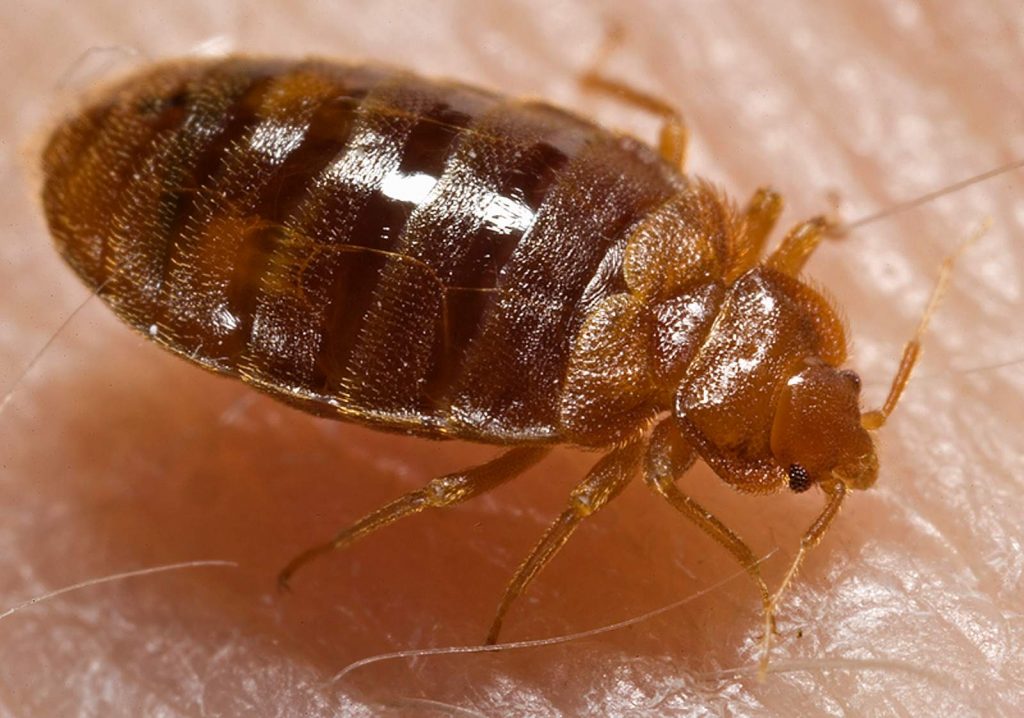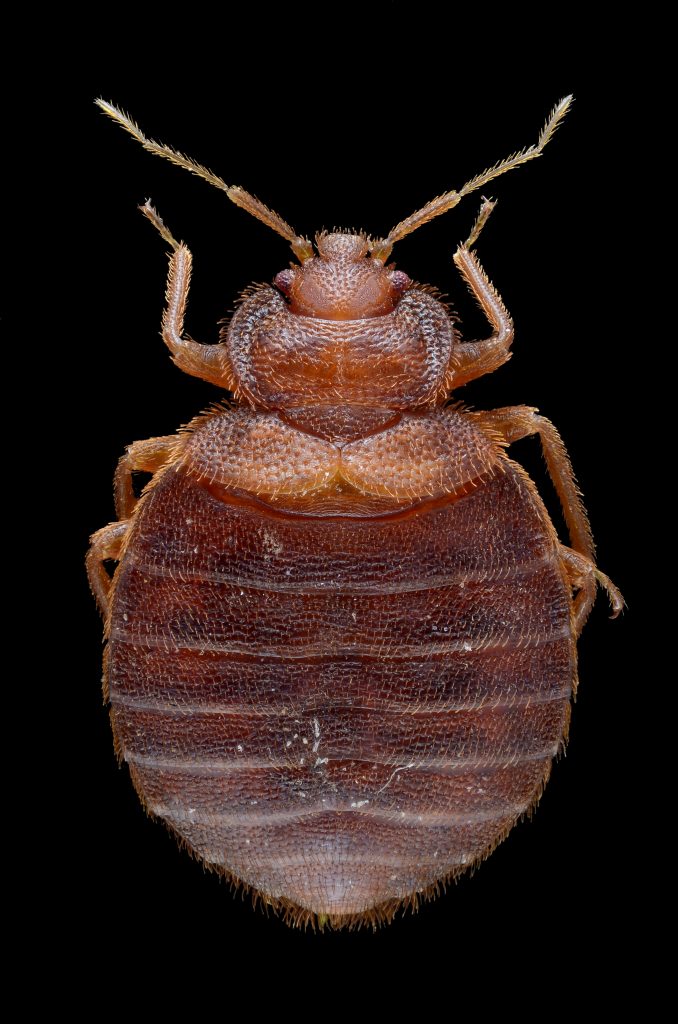
Bed bugs, most often found near beds hence the name, are part of the Cimcid insect family and found everywhere throughout the world except in Antarctica. Bed bugs are dark brown to reddish-brown depending on blood meal timing. An adult bed bug is about the size of an apple seed, is wingless, flat, and oval-shaped. The bed bug undergoes egg, nymph, and adult life stages also known as incomplete metamorphosis. Bed bugs require the blood meal from a mammal for survival with its preference being humans. Being that bed bugs live on the blood of humans, bed bugs are found not just in beds, but places humans frequently rest or become idle such as furniture, arena/theater seats, airplanes, buses, trains, schools, homes, and hotels.
Bed bugs are fantastic hitchhikers, as it is their primary method of distribution, and are often found riding in luggage (store luggage on an inspected luggage rack not the floor), physically on people, on personal belongings that include but are not limited to purses, clothes, shoes, backpacks, laptops, and more. In bedrooms and hotel rooms, bed bugs are often found in the tufts of mattresses, under and behind nightstands, headboards, bed frames, lamps, pictures, televisions, wall outlets, baseboards, dressers, closets, and surrounding furniture/fixtures. When traveling, it is exceptionally pertinent to check your room in these areas to avoid bringing home any unwanted visitors. As bed bugs are tiny and often difficult to locate it can be helpful to look for signs of infestation rather than the bed bug itself. Signs of infestation include bites on skin, blood stains on mattresses, shed bed bug exoskeletons, and fecal stains on clothes, mattresses, and bedding. Bed bugs can be extremely difficult to control even for the trained professional, so it is best not to go it alone. Incorrect treatment applications can make infestations harder to fix. The smaller the infestation the easier and cheaper the fix so seek immediate professional help at the first sign of a bed bug infestation. Bed bug infestations can get out of hand quickly, as it only takes the bed bug about 35 days to mature in ideal conditions.

There are a few methods of control a pest professional can take when conducting bed bug removal. The first choice is chemical control where the professional uses chemical means to treat the infestation. The second method of control is a heat treatment where a professional heats either the entire room or sometimes just the affected belongings such as furniture, to 132 degrees over a period of time killing all stages of the bed bug life cycle in the process. The third method of control, that happens to be the most effective and commonly used, is the combination of both the heat and conventional treatments. If you think you have bed bugs in your home or business, contact AllTrust Pest Control today to set up an inspection.
